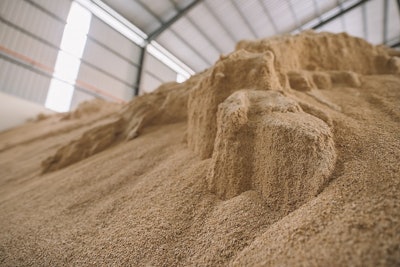
As antibiotic use falls out of favor, the global poultry industry is focused on developing commercial applications for promising alternatives.
Producers today face more regulations regarding the use of in-feed antibiotics and growing demand for raised without antibiotics (RWA) or no antibiotics ever (NAE) poultry. This is leading to the evaluation of alternative approaches for disease control.
Antibiotic alternatives are any substance substituting for therapeutic drugs. They come in two categories:
- Substances directly cytotoxic against infectious agents or removing pathogenic toxins, including vaccines, hyperimmune egg antibodies, antimicrobial peptides and bacteriophages.
- Substances that augment non-specific host immunity and gut health, including phytochemicals/phytonutrients, adjuvants, organic acids, enzymes, minerals, prebiotics and probiotics.
This article focuses on non-vaccine, antibiotic alternatives.
Direct cytotoxicity
Hyperimmune egg yolk antibodies
Hyperimmune, pathogen-specific antibodies can provide passive immunization. Hyperimmune egg yolk antibodies are applied via:
- Generation of egg antibodies in breeding hens, which are then transferred passively to progeny.
- Feeding chicks freeze-dried egg yolk powder from hens hyperimmunized against organisms.
Advantages of egg yolk antibodies include the ability to produce large quantities and collect them non-invasively from layer hens.
Antimicrobial peptides
Host-derived antimicrobial peptides are considered natural antimicrobials. They perform broad-spectrum antimicrobial activity, are selective to microorganisms and use different activation mechanisms.
When the correct physiological conditions are present, cationic antimicrobial peptides will disrupt the bacterial membrane of many bacteria. This includes multidrug-resistant bacterial strains.
Antimicrobial peptides such as granulysin and NK-lysins belong to the saposin-like protein family. Granulysin acts as an immunomodulator by attracting lymphocytes and modulating the expression of chemokines and cytokines. Administration of chicken NK-lysin is shown to increase body weight and reduce gut-lesion scores.
Immunomodulation
Immunomodulation improves a bird’s resistance to microbes or other infectious agents. Immunomodulators accelerate the natural defense mechanisms of a bird by:
- Triggering a strong and sustained immune response against disease causing microorganisms.
- Improving maturation of specific and non-specific immunity throughout the neonatal period and in young birds.
- Augmenting local protective immune reactions in the gastrointestinal tract and other susceptible sites.
- Enhancing the duration and level of immune response following vaccination.
The desired outcome of a successful immune response is for the bird to recognize the invading pathogen and prevent colonization.
Nutrition
Certain dietary supplements can alter immune function. The intestine plays a role in triggering an immune response against pathogenic microbes, while still maintaining tolerance to antigens from food. Care must be taken to achieve the correct balance between when a diet simply nourishes the host and when stimulation occurs.
Nutrition affects the immune response by releasing metabolites that enhance a cells ability to react to pathogenic microorganisms. Preliminary studies indicate select feed additives may be used to expedite and boost the development of early defense mechanisms to protect young chicks.
Nutrients under evaluation include:
- Addition of beta-mannanase to broiler diets results in positive changes to regulation of immune response and activation of immune response.
- Preparations of yeast cell walls that impacted performance and minimized the adverse impact of a challenge.
Phytochemicals
Phytochemicals are plant-derived chemicals with proven beneficial effects. These include a variety of herbs, spices, essential oils, oleoresins, flavonoids and bioactive molecules such as capsaicin and cineole.
Supplementing diets with phytochemicals improves growth performance variables, nutrient digestibility, innate immunity and host disease resistance. Adding phytochemicals alters normal gut microflora in broiler chickens and decreases the prevalence of pathogens by preventing colonization of the gastrointestinal tract.
There is also increasing evidence phytochemicals can modulate immune responses. One commercial blend of phytochemicals is approved in the European Union as a botanical feed additive for improving performance.
Probiotics
Probiotics, or direct-fed microbials modulate gut function and enhance intestinal health in chickens.
A variety of bacterial species, in particular Bacillus spp., are tested for use as probiotics in poultry. Some show improved performance, positive modulation of intestinal microflora and inhibition of pathogen colonization.
An ideal probiotic organism withstands processing and storage, survives in the acidic environment of the intestinal tract, adheres to the epithelium and/or mucus in the intestines, produce antimicrobial compounds and modulates immune responses. Care must be taken to select the strains or combinations of strains that will achieve a maximum benefit.
Combination approaches
A combination of alternatives may provide better results. Many combinations result in a synergistic response providing the maximum intended effects while still providing good economic returns.
Combination strategies include combining:
- Compounds with cytotoxic and immunomodulation effects.
- Multiple prebiotic and/or probiotic strains.
- Multiple phytochemical compounds.
Continued challenges
Nevertheless, numerous challenges remain in using antibiotic alternatives in poultry production.
First, there is not sufficient understanding of the mechanisms of action, including the relationship between the normal intestinal flora, pathogenic infections and immune responses.
Regulators and the industry must understand the appropriate, or most desired, regulatory pathways for antibiotic alternatives. Depending upon the actual marketing claim desired, the same molecule can often be registered in in multiple ways by multiple agencies.
Next, alternatives must withstand the harsh environment of the intestinal tract and arrive at the desired locations without degradation. Encapsulation methods, such as lipid encapsulation, are being investigated to protect products and allow for a slower release and potential longer impact.
Moreover, products must be produced cheaply enough to be economically viable for the poultry producer. This involves identifying more economic ways to produce the alternatives, only using products at special stages of production and using microencapsulation or other methods to reduce the necessary effective dose.
The optimal stages of poultry production for application must be identified, too. For example, immunomodulation could be used in ovo, at hatch through the first week of life, at feed changes, prior to transport to the processing facility or during a disease outbreak.
Finally, work must continue to close the gap between results obtained in an experiment and those in the field. Many products demonstrating great potential in well controlled experiments don’t necessarily provide statistically significant impacts in commercial settings.

















